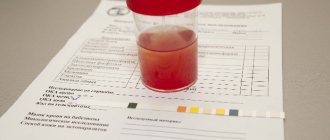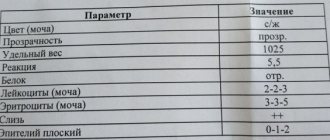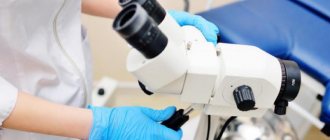It is worth explaining what a cold is. The mucous membrane of the nasopharynx is a sensitive organ that reacts to any change in the usual temperature. When we go out into the cold, it reacts with mild swelling to prevent hypothermia. But if a person is in the cold for a long time, the swelling increases, a sore throat and nasal discharge may appear. This is the beginning of the cold process.
A significantly cooled body is more vulnerable to viruses. The person caught a cold, and the next morning - headache, fever, cough, runny nose. Viruses have already tried their best here. Therefore, the cold is considered globally, as part of ARVI. Among the viruses are adenoviruses, rhinoviruses, the well-known flu and many others.
Quite often, viral infection provokes the development of a bacterial infection. In this case, they speak of a complication of a viral disease. The body is weakened, the immune system is no longer strong enough to fight, and bacteria easily penetrate the body. In addition, dormant bacteria already present in the body wake up and begin their work.
Many people do not understand the difference between acute respiratory viral infections and acute respiratory infections - an acute respiratory disease. In fact, there is not much difference. It’s just that doctors prefer to diagnose ARVI when they are sure that the original causative agent of the infection is a virus. ARI is diagnosed when there is no certainty that the virus is to blame, and there is a suspicion of bacterial infection1.
Causes of colds in adults
The source of the disease is a sick person who spreads the infection further. However, the routes of infection are different. The most common route is airborne2. Next comes tactile infection, since viruses can remain on any object touched by the infected person.
It is worth noting that viruses tend to concentrate. This means that it is much easier for a healthy person to become infected indoors, rather than standing with a sick person “in the middle of the field.” Viruses reliably remain viable for several days, especially in an unventilated area2.
Once in the body, the virus begins to actively multiply, moving deeper and deeper. A person himself becomes a source of infection for other people. Especially for those who have problems with immunity, for the elderly, for children, for those who have already caught a cold or are sick with other diseases2.
How exactly does the virus manifest itself, and what stages does the disease go through? There are four main phases of infectious respiratory infection:
- The pathogenic virus enters the body through the respiratory system and attaches to the cells of the mucous membranes. At this stage the person does not notice anything.
- The pathogen enters the blood. The body feels the invasion, the immune system begins to work, symptoms of intoxication appear in the body - weakness, malaise, fever, etc.
- The virus finds a place in the body where it is most comfortable and creates a focus of inflammation. At this stage, a person begins to have a cough, sore throat, severe runny nose and other symptoms.
- The fourth stage marks the conclusion. Either the source of infection develops into a complication and another form of the disease, or the body copes with the virus. Recovery comes1.
Berry cocktail: a powerful dose of vitamins
Drinking plenty of warm water is a mandatory measure in symptomatic express treatment. It’s better to start with a fruit drink made from berries (raspberries, currants, lingonberries, viburnum). You can pour boiling water over frozen berries, crush them with a mortar and strain through a sieve. Usually, after such a cocktail, temporary relief of symptoms immediately occurs.
Then during the day you need to drink at least 2 liters of liquid - warm water with lemon, tea with honey, decoction of linden flowers, infusions of chamomile and other medicinal plants. If you want to get rid of a cold rather than help it, then eliminate coffee and sugary carbonated drinks.
Symptoms of acute respiratory infections in adults
There are many symptoms for each individual viral and bacterial infection. But there are general signs of acute respiratory infections in adults, which can be used to judge the onset of the disease:
- Runny nose. Everyone is familiar with a runny nose, during which it is difficult to breathe through the nose and there is copious discharge. Often the cause is a viral disease, but a bacterial infection is also possible against the background of a general weakening of the body. If you have a runny nose, rhinitis, sinusitis, or their complications are diagnosed.
- Cough. The usual state. Cough varies in severity and is accompanied by pain or soreness. This is an extremely varied symptom in which laryngitis, bronchitis, tracheitis, as well as diseases of the larynx, trachea or bronchi can be diagnosed.
- Temperature increase. Mild forms of colds can pass without fever, but this is not always good. The temperature shows that the immune system is fighting off invaders. But a temperature above 38ºC requires close attention from the patient and doctors. High fever is typical for influenza viruses.
- General weakness and headache are a consequence of intoxication of the body and are very characteristic of a cold.
Viruses tend to invade a specific location in the body and develop there. The initial focus of infection may be in the mucous membrane of the nose or throat. This is where specific respiratory diseases originate - sinusitis, rhinitis, tracheitis, bronchitis, laryngitis, tonsillitis, pharyngitis and others1.
Normal humidity and high-quality ventilation are the worst enemies of the virus
During the heating season, the air in the apartment is drier than in the Gobi Desert - about 15%, which is 3.5 times lower than normal. This air dries out the mucous membranes of the upper respiratory tract, reducing their protective function and making them vulnerable to viruses.
Equally important is normal air circulation in the apartment.
When a patient coughs or sneezes, an aerosol “cloud” consisting of tiny particles of saliva and mucus is released into the air. The virus uses these particles as transport, so if there is a sick person in the house, infecting the rest of the household is just a matter of time.
The likelihood of airborne transmission of infection is sharply reduced if modern supply ventilation is installed in the house.
Poor immunity is the main cause of colds
The question remains, why does one person get sick, while his neighbor at his desk or seat on public transport remains healthy? It's all about immunity, its condition, readiness and performance.
For the development of a viral disease, three conditions are sufficient:
- Contact with the virus or its carrier;
- Penetration into the body and attachment of the virus (ARVI viruses settle on the nasopharyngeal mucosa);
- Inability of the immune system to cope with it.
Immunity is the main protective barrier. It must prevent the penetration of viruses and bacteria, and when they penetrate, it must successfully cope on its own and better without outside help. Otherwise, the disease will visit the person too often. In such cases, the immune system definitely needs support.
Garlic and ginger are the best herbal disinfectants
Ginger is often used in the treatment of ARVI and influenza. Grated ginger root is an excellent disinfectant, warming and tonic. It can be added to tea, and infusions and decoctions can be prepared based on it. If you don't have stomach problems, you can use garlic. There is a proven recipe - squeeze the juice from several heads of garlic, then mix it with honey in a one-to-one ratio and take this remedy one tablespoon twice a day.
Sliced garlic releases phytoncides into the air, which neutralize the infection. You can place a plate of grated or chopped garlic next to your bed.
Treatment of acute respiratory infections in adults
Often, when you have a cold, there is a risk of complications. This is why diagnosing a cold is necessary. Typically, after diagnosing the symptoms of acute respiratory infections in adults, treatment includes drug therapy.
In the first days after illness, it is recommended to remain in bed. It is important to ventilate the room more often and reduce the ambient temperature to avoid spreading the virus and infecting others. With any virus, it is necessary to consume a large amount of fluid in order to quickly remove toxins from the body. If the immune system is in order, then it itself is able to cope with the disease, the main thing is not to interfere1.
In case of complications or dangerous viruses, such as influenza, the body requires medicinal support:
- Sore throat is treated by gargling with special solutions, expectorants and emollients.
- Cough is treated with expectorants, antitussives or emollients (depending on the type of cough). Let us note that such a popular folk remedy as “breathing over potatoes” is highly not recommended by experts, since there is a high probability of getting a burn to the mucous membrane. It can also be dangerous at elevated body temperatures.
- At high temperatures, analgesics and NSAIDs (non-steroidal anti-inflammatory drugs) are prescribed.
- To combat viruses, special antiviral drugs are used.
- Immunostimulants are prescribed to help the immune system.
- In case of bacterial infection, local antibacterial drugs are used.
- For nasal congestion, vasoconstrictors and sea water preparations are recommended.
- In especially severe cases, antibiotics are prescribed (under the strict supervision of a specialist).2
Washing and rinsing: the first line of defense
When the first symptoms appear, there is a chance to neutralize the infection or at least reduce the intensity of the disease. This will help by rinsing your nose with a solution of hydrogen peroxide and gargling with sea salt or soda. To rinse the nasal mucosa, prepare a solution at the rate of 1 teaspoon of peroxide per half glass of warm water. To gargle, add one teaspoon each of salt and soda to a glass of warm water.
This is a recommendation for adults. If a child is sick and washing and rinsing in the usual way is problematic, then you can use pharmaceutical sprays with sea water.
How to cure acute respiratory infections in adults
Colds can be treated with various means. But don't forget about immunity. To activate local immunity, the drug IRS ®19, containing bacterial lysates5, can be used.
IRS®19 has been used for many years in the treatment of colds, acute respiratory viral infections or acute respiratory infections. Bacterial lysates activate local immunity, thereby suppressing microorganisms on the mucous membranes of the respiratory system. It becomes harder for new viruses and bacteria to enter the body. The treatment time for colds is reduced when using IRS®194.
Sleep and proper rest
If you have caught the flu or ARVI and are going to treat yourself at home, then this condition is one of the most important. Most often, it is lack of sleep and lack of proper rest, combined with permanent stress, that causes the body to capitulate to infection.
Therefore, you need to act on the contrary - go to bed no later than 22 hours and get a good night's sleep. It is worth remembering here that it is no coincidence that bed rest is one of the first medical recommendations for infectious diseases.
An important point is that in order to ensure proper rest, you need to stop wasting time on your smartphone and computer. Give yourself a break from information. Dopamine fasting sometimes heals just as well as normal.
Prevention of colds in adults
Prevention is easier than cure - this expression is especially true for colds. It is possible to get off the list of people who are often sick. To do this, you need to keep your immune system in good shape, and then you can calmly smile at everyone who coughs.
To prevent colds, you should follow the same therapeutic recommendations:
- Strengthen the immune system through physical exercise and hardening;
- Keep your weight normal;
- Always maintain hygiene: no one has canceled hand washing after going outside;
- Ventilate the premises as often as possible and maintain a comfortable, slightly cool temperature.
An additional remedy in maintaining immunity and protecting against colds can be a medicine - nasal spray IRS®19. The bacterial lysates included in its composition stimulate the immune system to counteract respiratory infections3,5.
Myths about acute respiratory infections or sore throat
Instructions
More details
1 - Sergeeva I.V. Pathogenesis of acute respiratory viral infections and influenza / I.V. Sergeeva [et al.] // Practical medicine. – 2012. – No. 6 (61). – 47-50 s. 2 - Sergeeva I.V. Immunological aspects of acute respiratory viral infections and influenza / I.V. Sergeeva [et al.] // Siberian Medical Review. – 2012. – 1-16 p. 3 - Instructions for the medical use of the drug Imudon® lozenges from 07/02/2018 4 - Kladova O. V. Clinical effectiveness of Imudon® in patients with tonsillopharyngitis against the background of acute respiratory diseases / O. V. Kladova [et al.] // Children's infections. – 2005. – No. 1. –55–59 c. 5 - Instructions for medical use of the drug Marimer nasal aerosol dated 02/28/2018 The material was developed with the support of Abbott in order to increase patient awareness of their health status. The information in the material is not a substitute for healthcare advice. Contact your doctor. RUIMD191614 from 06.26.2019








